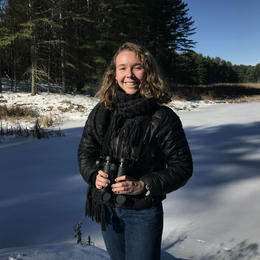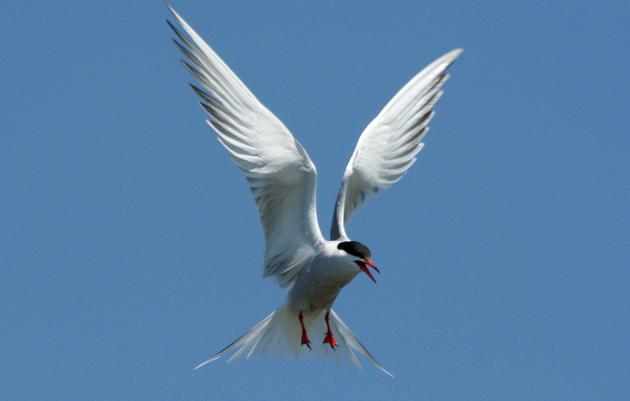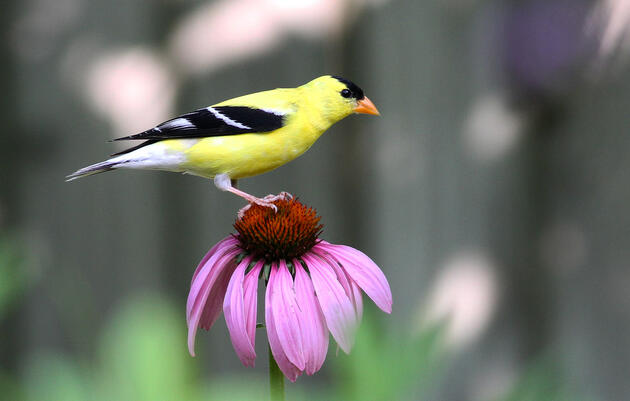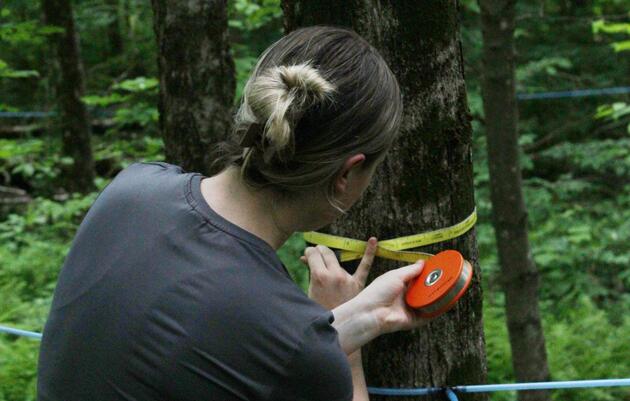The Junior Conservation Technicians (JCTs) were back this week to spend their spring break completing conservation projects at the Green Mountain Audubon Center all while learning about habitat restoration, community science projects, bird identification, tree identification, amphibian migration, and conservation career opportunities.
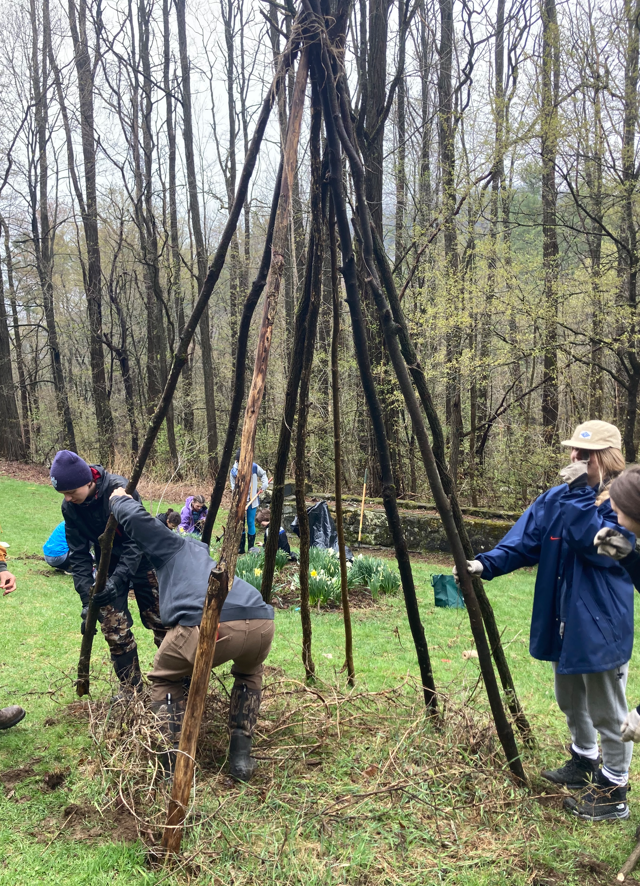
The JCTs took a break from gardening to meet with Emily Kaplita, our Senior Educator, to plan a week of summer camp. The camp is called the Junior Conservation Crew and JCTs will lead campers ages 8-12 in two big conservation projects: (1) A new Plants for Birds garden on the lower half of our nature center and (2) building bird nest boxes and placing them around the property. The week will allow JCTs to build their communication, teaching, and group management skills with support from our summer camp staff.
On our second day together, we met up with Elizabeth Spinney, Invasive Plant Project Coordinator for the Vermont Department of Forests, Parks & Recreation, at the Birds of Vermont Museum down the road to learn about phenology and how to collect phenological data on invasive species like Morrow’s Honeysuckle, Common Buckthorn, and Oriental Bittersweet. Phenology studies the timing of life cycle events for plants and animals. For example: When leaf buds break open on a plant or when a bird migrates back to Vermont. Elizabeth is studying the timing of these events for invasive terrestrial plants to better understand how to target management for these plants (i.e. target management before the plants turn to seed). We will share our data with the US National Phenology Network to contribute to a nation-wide community science project that helps us understand how climate change is affecting the timing of life cycle events for plants and animals. JCTs moved around the property to six different study sites and recorded observational data for each plant.
Later that day, JCTs were introduced to binoculars and bird identification. They practiced using bird guides on a few taxidermy birds as well as laminated cutouts of birds to-scale. Then we put our new binoculars and bird guide skills to use on a bird walk around the center. We visited different habitats from our beaver pond to the hardwood sugarbush trails. Lastly, we learned mnemonic phrases to help us understand some common bird songs.
On our third and last day together, we had two exciting conservation projects! In the morning we made Common Tern chick shelters. These shelters will help protect chicks from owl predation and harsh weather conditions. The shelters are placed right next to the nests and the hope is that when parents leave the nest that chicks will move into the shelter rather than being exposed/unguarded. We’re trying a new design this year that will allow the Common Tern adults to build their nest in partial cover of the shelter. We’ll see how they take to this new design when they start nesting in May. Mark Labarr, Audubon Vermont Conservation Program Manager, is lead on our Common Tern Recovery Project and has been studying the species for over 30 years. He and his interns will start visiting the islands in Lake Champlain that Common Terns use as nesting sites weekly to check on their progress. Stay tuned for updates! Learn more about the Common Tern Recovery Project.
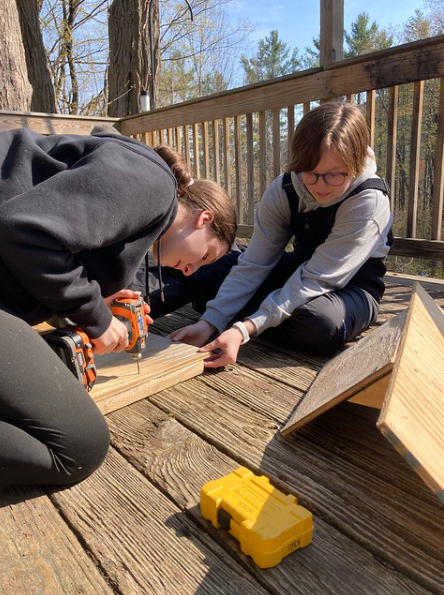
We spent our afternoon digging up a new area for our Plants for Birds garden in the sugarhouse field that campers will help finish in June. We spent a few hours ripping up turf, removing rocks, and turning soil. While the JCTs are gone, I’ll add some compost to these beds to help increase the nutrient level in the soil before we transplant with campers. JCTs chose a variety of flowers from the Audubon Plants for Birds Database, a tool that lists native plants in your area, shares what birds will benefit from each plant, and where you can buy them locally.
We’ll see our JCTs again in May for a full day BioBlitz!

